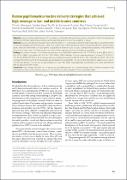| dc.contributor.author | LaMontagne, D Scott | |
| dc.contributor.author | Barge, Sandhya | |
| dc.contributor.author | Le, Nga Thi | |
| dc.contributor.author | Mugisha, Emmanuel | |
| dc.contributor.author | Penny, Mary E | |
| dc.contributor.author | Gandhi, Sanjay | |
| dc.contributor.author | Janmohamed, Amynah | |
| dc.contributor.author | Kumakech, Edward | |
| dc.contributor.author | Mosqueira, N Rocio | |
| dc.contributor.author | Nguyen, Nghi Quy | |
| dc.contributor.author | Paul, Proma | |
| dc.contributor.author | Tang, Yuxiao | |
| dc.contributor.author | Minh, Tran Hung | |
| dc.contributor.author | Uttekar, Bella Patel | |
| dc.contributor.author | Jumaan, Aisha O | |
| dc.date.accessioned | 2020-11-11T11:01:56Z | |
| dc.date.available | 2020-11-11T11:01:56Z | |
| dc.date.issued | 2011 | |
| dc.identifier.citation | LaMontagne, D. S., Barge, S., Thi Le, N., Mugisha, E., Penny, M. E., Gandhi, S., ... & Paul, P. (2011). Human papillomavirus vaccine delivery strategies that achieved high coverage in low-and middle-income countries. Bulletin of the World Health Organization, 89, 821-830. | en_US |
| dc.identifier.uri | https://hdl.handle.net/123456789/194 | |
| dc.description.abstract | Objective
To assess human papillomavirus (HPV) vaccination coverage after demonstration projects conducted in India, Peru, Uganda and Viet Nam by PATH and national governments and to explore the reasons for vaccine acceptance or refusal.
Methods Vaccines were delivered through schools or health centres or in combination with other health interventions, and either monthly or through campaigns at fixed time points. Using a two-stage cluster sample design, the authors selected households in demonstration project areas and interviewed over 7000 parents or guardians of adolescent girls to assess coverage and acceptability. They defined full vaccination as the receipt of all three vaccine doses and used an open-ended question to explore acceptability.
Findings Vaccination coverage in school-based programmes was 82.6% (95% confidence interval, CI: 79.3–85.6) in Peru, 88.9% (95% CI: 84.7–92.4) in 2009 in Uganda and 96.1% (95% CI: 93.0–97.8) in 2009 in Viet Nam. In India, a campaign approach achieved 77.2% (95% CI: 72.4–81.6) to 87.8% (95% CI: 84.3–91.3) coverage, whereas monthly delivery achieved 68.4% (95% CI: 63.4–73.4) to 83.3% (95% CI: 79.3–87.3) coverage. More than two thirds of respondents gave as reasons for accepting the HPV vaccine that: (i) it protects against cervical cancer; (ii) it prevents disease, or (iii) vaccines are good. Refusal was more often driven by programmatic considerations (e.g. school absenteeism) than by opposition to the vaccine.
Conclusion High coverage with HPV vaccine among young adolescent girls was achieved through various delivery strategies in the developing countries studied. Reinforcing positive motivators for vaccine acceptance is likely to facilitate uptake. | en_US |
| dc.language.iso | en | en_US |
| dc.publisher | Bull World Health Organ | en_US |
| dc.subject | Human papillomavirus vaccine | en_US |
| dc.subject | Delivery strategies | en_US |
| dc.subject | Low- and middle-income countries | en_US |
| dc.title | Human papillomavirus vaccine delivery strategies that achieved high coverage in low- and middle-income countries | en_US |
| dc.type | Article | en_US |

